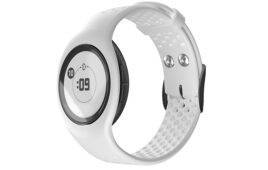
[Photo by NEC Corporation of America with Creative Commons license.]
“Biomedical or clinical engineering departments have been traditionally associated with facilities. But they are shifting reporting structure from the facilities department to the IT department,” explains Tim Gee, principal of Medical Connectivity Consulting.
Gee just ended a 5-month project helping a Stanford hospital shift its biomedical engineering department closer to the IT department. He estimates that about 30% of hospitals in the United States have made this shift.
“A hospital in Grand Rapids, Mich., has gone the farthest, by fully integrating its biomedical engineering department into its IT department,” notes Gee, who says he expects the trend to continue and evolve.
The days of field service past
There are few reasons the separation of biomedical engineering from IT makes sense for hospitals, says Gee. “Today, medical devices are mostly computers with signal processing front ends, and the ‘smarts’ are found in the software rather than analog circuits.”
Over the last decade, biomeds have needed to become more IT savvy, and Gee sees this as a natural move for these departments that have been undervalued and underutilized.
In his blog, as far back as 2006, Gee observed the beginning of the shift: “The days of making component level repairs are fading. Advancing manufacturing technologies have not made it any easier for biomeds, as more products become single board devices with little or no opportunity to service the devices themselves. Besides testing equipment for safety and doing periodic maintenance, biomeds have been reduced to swapping broken devices with manufactures.”
It ensures the department charged with patient safety (biomeds) and information technology are working together. Gee says: “The real value in biomeds lies not in their electronics service expertise, but in their understanding of what it takes to ensure patient safety when using medical devices for therapy delivery or surveillance. This is something that IT can’t even begin to imagine.”
But IT does bring some value to the mix, Gee says. “IT usually has the project management resources required to ensure the installation of devices is successful.”
It all circles back to value.
The shift is a response to trends in medical device development as well as a change in how hospitals are internalizing a move from fee-for-service to value-based care. One of the chief roles for biomedical engineers is to provide analysis of cost containment and value of a technology.
Gee says the needs assessment and vendor selection process for the newly combined or aligned departments are different from a traditional stand-alone medical device and an information system. The process must accurately capture all the clinical needs (caregiver productivity, evolving care delivery methods, patient safety and comfort, etc,) and all the IT requirements (enterprise solution, systems integration). The teams will be charged with defining a clear set of requirements for ongoing operation, maintenance, and support for the networked systems within the hospital.
As hospitals make the change, medtech companies can do more by supplying value data for their technologies. Medtech firms also need to acknowledge that the maintenance skills on hospital staff are changing, and continue to design technology for hospitals needs now and in the future.
[Want to stay more on top of MDO content? Subscribe to our weekly e-newsletter.]




